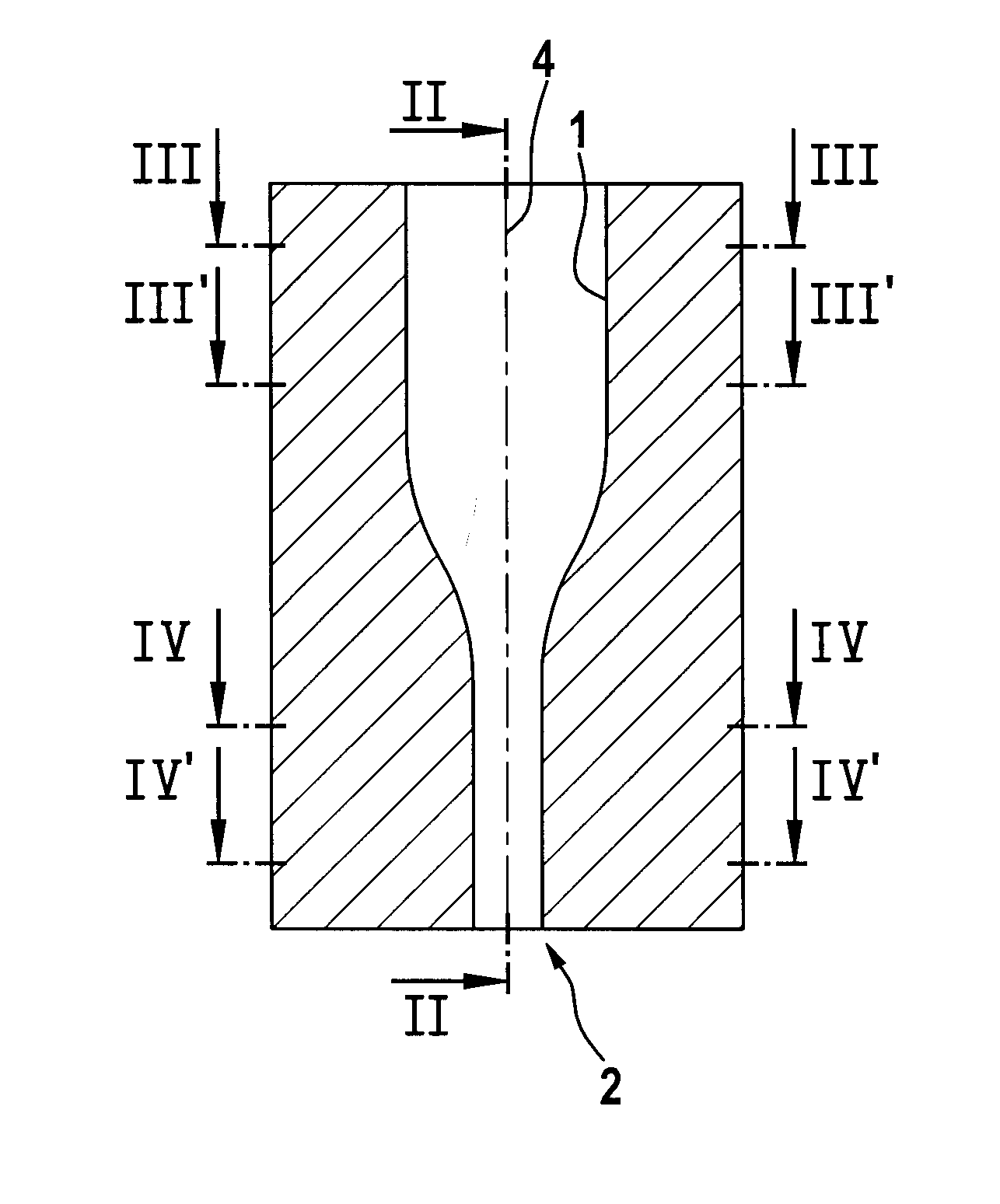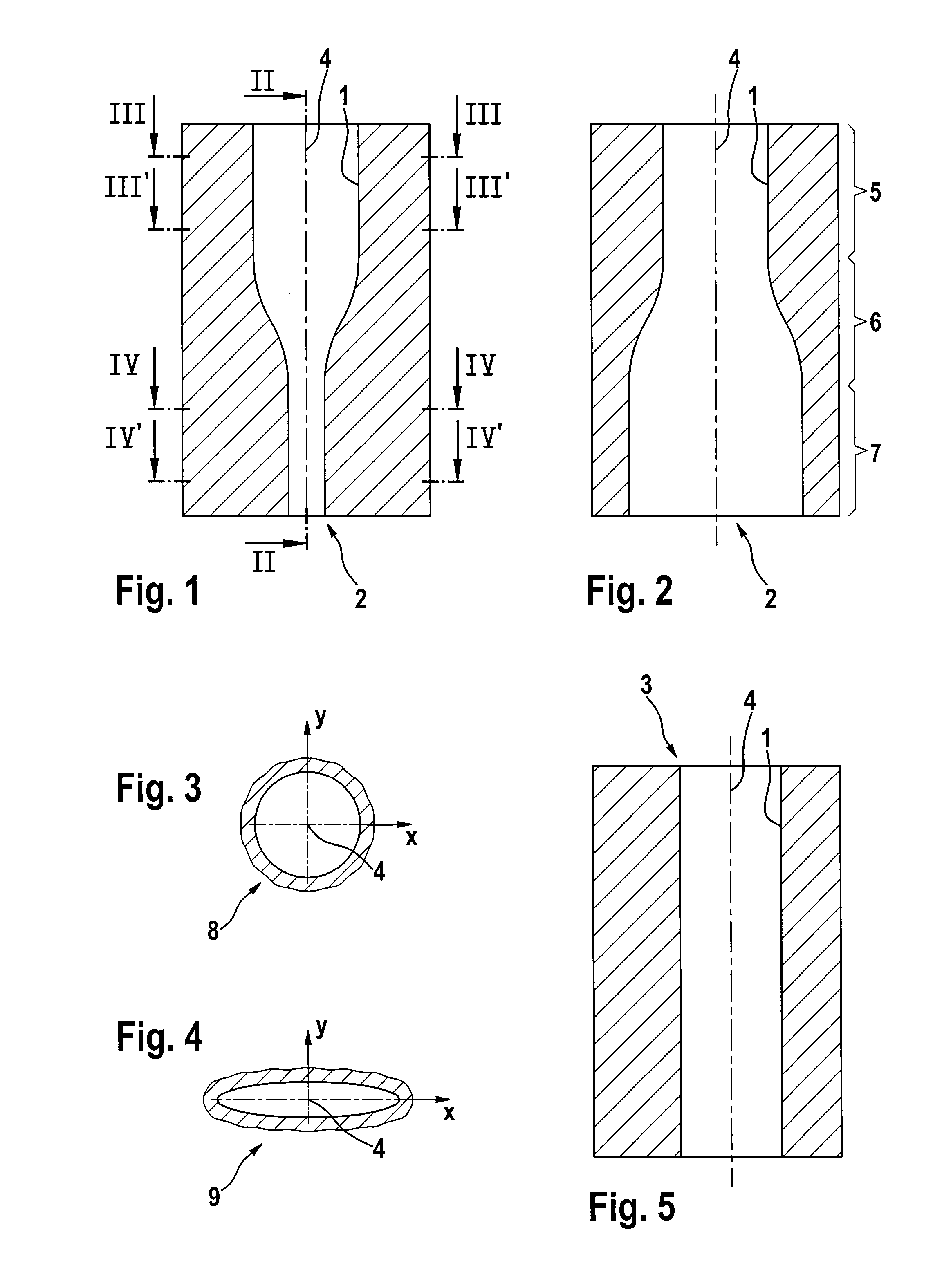Method for Producing a Bore
a technology of bores and machining methods, applied in the direction of manufacturing tools, instruments, electric digital data processing, etc., can solve the problems of high cost, large expenditure, and insufficient simulation of actual deformation state in operation, and achieve the effect of reducing expenditur
- Summary
- Abstract
- Description
- Claims
- Application Information
AI Technical Summary
Benefits of technology
Problems solved by technology
Method used
Image
Examples
Embodiment Construction
[0018] For the manufacture of a bore 1 with the cylindrical nominal shape 3 illustrated in Fig. 5, which nominal shape results by deformation in the operational state, first the initial shape 2 of the bore 1 illustrated in Figs. 1 and 2 is determined. The initial shape 2 is the shape of the bore 1 before being mounted. The initial shape 2 is substantially cylindrical in its upper area 5 and elliptical in its lower area 7. The illustration of the deviation of the elliptical shape from the cylindrical shape is not true to scale in Figs. 1 and 2 but is shown greatly enlarged. In fact, the deviation is in the range of approximately 8 to 60 m. The central area 6 is a transition area from the cylindrical cross-sectional shape 8 to the elliptical cross-sectional shape 9. The cylindrical cross-sectional shape 8 is illustrated in Fig. 3 and the elliptical cross-sectional shape 9 in Fig. 4.
[0019] For determining the initial shape 2 the deformation of the nominal shape 3 in the operational sta...
PUM
 Login to View More
Login to View More Abstract
Description
Claims
Application Information
 Login to View More
Login to View More - R&D
- Intellectual Property
- Life Sciences
- Materials
- Tech Scout
- Unparalleled Data Quality
- Higher Quality Content
- 60% Fewer Hallucinations
Browse by: Latest US Patents, China's latest patents, Technical Efficacy Thesaurus, Application Domain, Technology Topic, Popular Technical Reports.
© 2025 PatSnap. All rights reserved.Legal|Privacy policy|Modern Slavery Act Transparency Statement|Sitemap|About US| Contact US: help@patsnap.com


